
1
USER MAN
U
AL
Contents
Overview ............................................................................................... 2
What’s in the box? ................................................................................ 2
Optional accessories......................................................................................... 2
Components of the Tru-Test XRP2 EID Panel Reader System ................... 3
Parts of the panel reader .................................................................................. 3
Panel reader LCD ............................................................................................. 3
Panel reader power supply ............................................................................... 3
Antenna .......................................................................................................... 3
Ways to use the panel reader ................................................................ 4
Installing the panel reader and antenna ................................................. 4
Example installation ......................................................................................... 4
Installation information .................................................................................... 4
Alternative installation options ......................................................................... 5
Connecting to an indicator (optional) ..................................................... 7
Connecting to a
Bluetooth
®
enabled indicator .................................................. 7
Connecting to an indicator that does not offer
Bluetooth
®
wireless
connectivity ..................................................................................................... 7
Recording EID tags ................................................................................ 7
Recording EID tags when the panel reader is connected to another device ........ 7
Recording EID tags when the panel reader is being used on its own
(standalone)..................................................................................................... 7
Transferring information from the panel reader ...................................... 8
Modifying the panel reader settings ....................................................... 9
Modifying the panel reader settings using the menu options on the panel
reader itself...................................................................................................... 9
Modifying the panel reader settings using Data Link ....................................... 10
Troubleshooting .................................................................................. 13
Caring for the panel reader and antenna .............................................. 15
Service and warranty information ......................................................... 15
Upgrading the software ....................................................................... 15
Specifications ...................................................................................... 16
Panel Reader ................................................................................................. 16
Antennas ....................................................................................................... 16
Compliance ......................................................................................... 17
FCC notice ..................................................................................................... 17
FCC warning .................................................................................................. 17
Responsible party in the USA .......................................................................... 17
Industry Canada notice .................................................................................. 17
Industry Canada warning ............................................................................... 17
EU Declaration of Conformity ......................................................................... 17
Conformité .......................................................................................... 17
Avis d’Industrie Canada ................................................................................. 17
Avertissement d’Industrie Canada .................................................................. 17
Déclaration UE de conformité ......................................................................... 17
© 2013-2018 Tru-Test Limited
All product names and brand names in this document are trademarks or
registered trademarks of their respective holders.
No part of this publication may be photocopied, reproduced, stored in a
retrieval system, or transmitted in any form or by any means, electronic,
mechanical, photocopying, recording or otherwise without the prior written
permission of Tru-Test Limited. Product specifications may change without
prior notice.
For more information on other quality Tru-Test Group brands and products,
visit www.tru-test.com
Tru
-Test Limited
25 Carbine Road
Mt Wellington
Auckland 1060
New Zealand
Postal address:
P O Box 51078
Pakuranga
Auckland
2140
New Zealand
The
Bluetooth
®
word mark and logos are registered trademarks owned by
Bluetooth SIG, Inc. Any use by Tru-Test Limited is under licence.
All trademarks with an * are neither owned by, nor licensed to Tru-Test
Limited and belong to their respective owners.
Issue 5 07/2018

2
Overview
This user manual contains installation and user instructions for the Tru-Test XRP2 EID
1
Panel Reader System which identifies and reads electronic tags
on individual animals, allowing for accurate traceability and management of stock.
The Tru-Test XRP2 EID Panel Reader System consists of an XRP2 EID Panel Reader with a Large or Small antenna.
The Tru-Test XRP2 EID Panel Reader (the panel reader)
is a dual mode FDX-B / HDX EID reader optimized for high performance with ISO animal tags,
operating at 134.2 KHz with read distances of up to 1 m, depending on the tag and environmental conditions. It includes a fast auto-tuning
technique and Digital Signal Processing capability to increase read range and to reduce unwanted interference effects.
A Tru-Test Large or Small antenna is connected to the panel reader; the panel reader may be connected to a Tru-Test weigh scale indicator or to a PC.
What’s in the box?
Check that you have all of the following items. If anything is missing, contact your supplier.
XRP2 panel reader
(the panel reader)
Large or Small antenna
(may be supplied separately)
The 5 m extension lead supplied may
be used to connect the antenna to
the reader (optional).
Panel Reader-Serial cable
Connects the panel reader to a
weigh scale indicator (an indicator)
Serial-USB adaptor cable
Together with Panel Reader-Serial
cable, provides connection to a PC
Mains power adaptor
(differs depending on region)
USB flash drive
Contains Data Link for PC software
and reference information
Battery leads
Mounting bracket
Optional accessories
These optional accessories may be ordered separately from your local Tru-Test representative. They are not required for a typical setup.
• Dual antenna adaptor - used to connect two antennas to a single panel reader. See
Using two antennas
on page 5.
• Synchronisation cable - used to connect two panel readers together. See
Synchronising two panel readers
on page 6.
1
EID = Electronic Identification. This term is equivalent to RFID = Radio Frequency Identification, in respect of this and similar products.

3
Components of the Tru-Test XRP2 EID Panel Reader System
Parts of the panel reader
Panel reader LCD
Panel reader power supply
The panel reader can be powered by a 12 V battery, using the battery leads supplied. The panel reader operates well from a 12 V automotive battery,
however a marine battery is less prone to permanent damage if the battery is not charged at least every few days. Connect the red clip to the positive
terminal (+) on the battery and the black clip to the negative terminal (-).
Alternatively, the panel reader may be powered by mains power using the mains power adaptor supplied.
The panel reader does not have an on/off switch. It switches on automatically when a power source is applied. The Power LED (red)
illuminates to show that the panel reader is on.
If the Power LED (red) is flashing, this indicates that the battery voltage is too low. Disconnect the battery and recharge it.
Antenna
An antenna allows the panel reader to read EID tags. The antenna creates a magnetic field to energize the EID tag and it receives the very small
signals transmitted by the tag.
Only a Tru-Test antenna should be used with the panel reader. There are two types of antenna available, a Large and a Small antenna.
The panel reader continually monitors the state of the antenna. Warning messages displayed on the LCD indicate when a fault exists. A diagnostics
menu in the panel reader settings provides additional information. See
Panel reader settings
on page 9.

4
Ways to use the panel reader
The panel reader can be used in two ways:
1 Standalone - the panel reader saves each scanned tag in its internal memory. These records can be transferred afterwards. See
Transferring
information from the panel reader
on page 8.
2 Connected – the panel reader immediately transmits every scanned tag to a connected device, such as an indicator.
Installing the panel reader and antenna
Example installation
In the example below, a single panel reader is being used as part of a weighing system. The panel reader and antenna are mounted to a cattle crush
and the panel reader is connected to an indicator and load bars. When the animal enters the cattle crush, its EID tag number is scanned by the panel
reader and sent to the indicator.
XRP2 Panel Reader
Tru-TestAntenna
EID Tag
Tru-Test Indicator
Installation information
The panel reader and antenna can be mounted onto a flat surface (timber rails, concrete), or onto metal pipe-work, using the hardware supplied. If
you have a large antenna, the panel reader can also be mounted directly on the back of the antenna.
When mounting the antenna, do not damage it by drilling through it or piercing the surface with a screw. Use the mounting holes
provided.
Factors to consider:
• The panel reader and antenna should be installed on the outside of a crush/chute, weigh crate or drafter so that it is not damaged by animal
movement.
• Animal flow must be restricted to ensure that only one animal is within the antenna’s read range.
• The location of the antenna in relation to metal bars or pipes needs to be considered. See
Troubleshooting
on page 13.
• The positioning of the antenna is important to obtain an effective read of the EID tag:

5
Antenna
Front of crush/chute,
weigh crate or drafter
Read zone
Animal flow inside
crush/chute, weigh
crate or drafter
Keep animals
out of this area.
Animals inside
this area could
adversely affect
read performance
and may damage
the antenna
Antenna
After you have installed the antenna and reader, connect the antenna to the panel reader. An extension lead may be required (supplied with the
antenna).
Alternative installation options
Using two antennas
If an increased operating area is required, two antennas may be connected to a single panel reader using a Dual Antenna Adaptor.
A dual antenna adaptor can be ordered by contacting your local Tru-Test representative.
A dual antenna adaptor must not be used with only one antenna.
A single antenna may read a tag as far as 1 m away, dependant on the installation:
Tag
Tag travel
Antenna
Panel
Reader
~1 m

6
Using a second antenna with a Dual Antenna Adaptor will almost double the read area.
Tag
Tag travel
Panel
Reader
Antenna 1
Dual
Antenna
Adaptor
Antenna 2
~1.8 m
Depending on tag orientation, it is best to experiment to determine the optimum distance between the two antennas. The distance will range from
the maximum read range of one antenna (~1 m in the above example) to almost double that (~ 1.8 m in the above example).
The two antennas may be set up so that they are aiding (facing the same way), or opposing (facing towards each other), as pictured here. For more
information, contact your local Tru-Test representative.
Synchronising two panel readers
If two panel readers are installed in close proximity of each other (within 50 m [150 ft]), they must be synchronised, or performance will be reduced.
To synchronise two panel readers, a Synchronisation Cable must be used. This is an optional accessory which can be ordered by contacting your local
Tru-Test representative. The synchronisation cable connects the two panel readers via the Power connectors. Each panel reader must be connected to
its own indicator. Full instructions on how to synchronise two panel readers will be supplied when the cable is ordered.
Panel
Reader 1
Panel
Reader 2
Antenna cable
Synchronisation cable
Antenna cable
Tru-Test
weigh scale
indicator
Tru-Test
weigh scale
indicator
Antenna 1
Antenna 2
If two readers are synchronised, it is possible to set up ‘dynamic field operation’ for even greater tag read probability. For more information, contact
your local Tru-Test representative.

7
Connecting to an indicator (optional)
Connecting to a
Bluetooth
®
enabled indicator
To establish a
Bluetooth
®
wireless connection between the panel reader and a Tru-Test
Bluetooth
enabled indicator, you need to ‘pair’ the two
devices. The panel reader can be paired with any Tru-Test
Bluetooth
enabled indicator and to some third party devices.
When connecting the panel reader wirelessly to a Tru-Test indicator, always turn the indicator on BEFORE the panel reader.
1
With both devices off, position the panel reader within 5 metres of the indicator.
2 Switch on the indicator and, if necessary, check that its
Bluetooth
setting is enabled.
3 Connect the panel reader to a power source (battery or mains power).
Wait for up to 1 minute until the two devices are paired. When pairing is complete, the panel reader’s
Bluetooth
®
wireless connection LED (blue) illuminates and the LCD displays the name of the connected device.
4 Use the panel reader to scan an EID tag in order to test the connection.
Connecting to an indicator that does not offer
Bluetooth
®
wireless connectivity
Connect the panel reader to the indicator using the Panel Reader-Serial cable supplied. Follow the instructions provided with your indicator.
Recording EID tags
The method used to record EID tags differs depending on whether the panel reader is being used ‘standalone’ or ‘connected’ (to another device such
as an indicator). For more information, see
Ways to use the panel reader
on page 4.
Recording EID tags when the panel reader is connected to another device
Refer to example installation diagram in
Installing the panel reader and antenna
on page 4.
1 Set up the indicator or other device for a recording session, according to the instructions provided with the device.
2 Move the animal into the cattle crush.
When the animal passes near the antenna, the EID tag will be read by the panel reader and sent to the connected indicator. The EID tag is
recorded in the indicator’s internal memory. The EID tag number will appear on the panel reader’s LCD, the Read LED (green) will flash and the
panel reader will beep
to indicate that the tag has been read successfully.
Recording EID tags when the panel reader is being used on its own (standalone)
1 Start a new recording session by pressing. . The panel reader beeps and the session number appears on the LCD.
2 Move the animal into the cattle crush.
When the animal passes near the antenna, the EID tag will be read and recorded in the panel reader’s internal memory. The EID tag number will
appear on the panel reader’s LCD, the Read LED (green) will flash and the panel reader will beep
to indicate that the tag has been read
successfully.

8
Transferring information from the panel reader
There are two ways to get information off the panel reader.
Data Link for PC Data Link app for Android* smartphone
You can:
• save session files
• register a transaction with NAIT or NLIS (New Zealand and
Australia only).
• transfer session files to MiHub Livestock.
You can:
• transfer and share session files
• register a transaction with NAIT or NLIS (New Zealand and
Australia only).
• transfer session files to MiHub Livestock.
To do this:
1 Connect the panel reader to a PC using the cable supplied.
2 Launch Data Link on your PC.
3 Click
to get information off the panel reader.
To do this:
Launch the app on your smartphone and follow the instructions.
The Tru-Test Data Link app is available to download for
free from the Google Play* store (Android* devices).
Tru-Test Data Link for PC software is supplied on the USB
flash drive or is available to download for free from
www.tru-test.com

9
Modifying the panel reader settings
You can modify the panel reader settings using the menu options on the panel reader itself, or by connecting the panel reader to a PC and using Data
Link.
Modifying the panel reader settings using the menu options on the panel reader itself
To access the panel reader settings:
Press
.
The first three items appear on the LCD.
To scroll through and highlight options, press
or repeatedly.
To select a highlighted option or modify a setting, press .
To exit out of the panel reader settings, highlight EXIT, then press
.
Panel reader settings
Menu name
Options
Description
BLUETOOTH® Auto* The panel reader will automatically connect to previously used devices or other Tru-Test devices.
Manual This setting should be used when connecting to a panel reader from an Android™ smartphone
or other
Bluetooth
enabled device.
Off Disables the
Bluetooth
wireless connection.
FIND BT DEVICES Allows you to manually search for other
Bluetooth
enabled devices.
PAIRED DEVICES Lists previously paired devices. Select from this list to connect to another device.
DUPLICATES On* The panel reader will not record the same EID twice in the same session.
Off The panel reader will record the same EID twice in the same session.
OUTPUT MODE Single* The panel reader will only record and send the same EID once.
Cont (Continuous) The panel reader will record only once but send the same EID each time it is read.
DATA FORMAT Data format changes the way that EIDs are stored and output from the panel reader.
Dec 1 (Decimal 1)* Standard decimal format with a space between the country (or a manufacturer’s, possibly
shared) code and the national identification (or a manufacturer’s unique within series) code e.g.
826 123456789012.
Dec 2 (Decimal 2) Decimal format used in some countries with no space between the country (or a manufacturer’s,
possibly shared) code and the national identification (or a manufacturer’s unique within series)
code e.g. 826123456789012.
Hex (Hexadecimal) e.g. 8000F58000000001.
ISO Complies with ISO 24631-6 e.g. 1000000826000000123456.
DIAGNOSTICS There are four diagnostics screens which provide troubleshooting information. Select NEXT to scroll through the screens. If
the values fall outside the normal range, see
Troubleshooting
on page 13.
Supply voltage The power supply voltage is displayed and should be followed by (OK).
Antenna voltage and
tuning value
The antenna voltage is displayed and should be followed by (OK). The tuning value is displayed.
The graph should show a dot in the middle band and be followed by (OK).
Noise level Displays the levels of interference being detected. The noise level should be in the lower part of
the graph.
Read rate Displays the reads per minute for the current location of the tag.
SOFTWARE VERSION The panel reader software version.
LANGUAGE ENGLISH
ESPAÑOL
PORTUGUÊS
FRANÇAIS
DEUTSCH
You can change the language displayed on the panel reader’s LCD.

10
Modifying the panel reader settings using Data Link
In order to modify the panel reader settings using Data Link, you must first install Data Link on the PC. To do this, insert the USB flash drive into a
USB port on your PC and follow the instructions.
1 Connect the panel reader to a PC using the cable supplied.
2 Launch Data Link.
3 Click
.
4 Click on one of the tabs:
Data Link panel reader settings
User Interface tab
This tab allows you to modify the panel reader’s user interface.
Setting Options Explanation
Beeper Enabled* The panel reader normally beeps when a tag is read or a key is pressed. This can be disabled, if
required.
Disabled
Language ENGLISH*
ESPAÑOL
PORTUGUÊS
FRANÇAIS
DEUTSCH
The panel reader’s user interface can be displayed in English, Spanish, Portuguese, French or
German.
Bluetooth® tab
This tab allows you to modify the panel reader’s
Bluetooth
settings.
Setting Options Explanation
Bluetooth Control Auto* The panel reader will automatically connect to previously used devices or other Tru-Test devices.
Manual This setting should be used when connecting to a panel reader from an Android™ smartphone or
other
Bluetooth
enabled device.
Off Disables the
Bluetooth
wireless connection.
XRP2 MAC Address N/A (read only) This is the unique address for the panel reader’s
Bluetooth
wireless connection module. This
address may be used to confirm the identity of the panel reader when it is searched for by another
device such as a PC.
Device Name N/A You can add to the list of paired devices by manually entering the name of a device, entering the
device’s unique MAC address and clicking Add device to list of paired devices. This allows
the panel reader to be paired with a non-Tru-Test device.
Device MAC Address N/A
Add Device to Paired
List
N/A
Devices XRP2 is paired
with
N/A Lists previously paired devices.
Clear Paired Device List N/A
Click on Clear paired device list to remove all previously paired devices from the panel reader’s
list of paired devices. You may want to do this to speed up automatic connection to a new
XR3000, or to prevent connection to a device that you accidentally paired to.
Set XRP2 Bluetooth PIN Set PIN to 0000*
Set PIN to default
When pairing the panel reader with another
Bluetooth
enabled device (for example a mobile
phone), you may need to reset the panel reader’s
Bluetooth
PIN. This may be because the device
will only accept a PIN comprising either alphabetic characters or numeric characters.
By default, the panel reader’s
Bluetooth
PIN is set to 0000 (numeric characters), however if you
need to change it to default (alphabetic characters), select Set PIN to default.
If you are having trouble pairing the panel reader with another device, try resetting the PIN then
repeat the steps for pairing.

11
Reading Tags tab
This tab allows you to modify the way the panel reader reads tags.
Setting Options Explanation
EID output format EID output format changes the way that EIDs are stored and output from the panel reader.
Standard Standard decimal format with a space between the country (or a manufacturer’s, possibly shared)
code and the national identification (or a manufacturer’s unique within series) code e.g.
826 123456789012.
No space Standard decimal format with a space between the country (or a manufacturer’s, possibly shared)
code and the national identification (or a manufacturer’s unique within series) code e.g.
826 123456789012.
Hexadecimal e.g. 8000F58000000001.
ISO Complies with ISO 24631-6 e.g. 1000000826000000123456.
Check for duplicates Enabled* When Duplicates is enabled, the panel reader will not record the same EID twice in the same
session.
Disabled
Output mode Single output* The panel reader is continuously scanning for EID tags. In Single output mode, an EID tag will only
be recorded once.
Continuous The panel reader is continuously scanning for EID tags. In Continuous mode, an EID tag will be
recorded only once but sent each time it is read. This can be useful when gathering statistics
about animal behaviour.
Read mode This setting allows you to define the types of tags which the panel reader will record and output.
Dual output mode
(FDX and HDX)*
The panel reader will record and send both FDX and HDX tags.
FDX The panel reader will record and send only FDX tags.
HDX The panel reader will record and send only HDX tags.
Transmitter power level High* The transmitter power level is set to High by default, offering a maximum read range. The Low
setting has a reduced read range, but uses less power. The Low setting may be useful in order to
conserve a battery if this is being used to power the panel reader.
Low
Read non-animal tags Enabled This setting allows non-animal tags to be read (EID tags used in industry). EID tags used for
animal identification should be programmed as animal tags. However in some cases tags are
supplied that are programmed as non-animal. The panel reader is set to ignore non-animal
(industrial) tags and display a ‘non-animal tag warning’ by default (Disabled). Enabling this setting
will mean that non-animal (industrial) tags will be read.
Disabled*
Date/Time tab
This tab allows you to change the panel reader’s date and time. The date and time settings are recorded against the animal ID during a scanning
session. When the session is transferred to a PC, the date and time are columns in the resulting file. The filename, by
default, also contains the date
of the first scanned record in the session.
Setting Options Explanation
Synch XRP2 to PC
Date/Time
N/A Allows you to synchronise the panel reader’s date and time with the settings on the PC.
Set time N/A To change the time:
1 Beside the time field, click to select the digits you want to change.
2 Either type in the required digits
– or –
Click on the arrows beside the time field.
3 Click to select a.m. or p.m.
4 Either type a or p
– or –
Click on the arrows to toggle between a.m. and p.m.
Set date N/A To set the date:
1 Beside the date field, click to select the digits you want to change.
2 Either type in the required digits
– or –
Click on the drop-down arrow beside the date field to view the calendar. Use the scroll
arrows on the left and right hand side of the calendar to change the month. Click to select a
date.
3 Click Close.

12
About tab
This tab allows you to view the properties of the panel reader. The panel reader properties may be required during troubleshooting.
Setting Options Explanation
Firmware version N/A (read only) Version of software used by the panel reader. To update the panel reader’s software, see
Upgrading
the software
on page 15.
Serial number N/A (read only) The panel reader’s serial number.
Supply voltage N/A (read only) The panel reader power supply voltage level.
Clear Configuration tab
The tab allows you to reset the panel reader’s settings to default values. This will not alter previously recorded records or sessions.
Setting Options Explanation
Reset all XRP2
configurations back to
factory defaults
N/A
Click on Reset all XRP2 configurations back to factory defaults to reset the panel reader’s
settings to default values, as indicated by the asterisks on the settings throughout this table.
Defaults are marked *

13
Troubleshooting

14
If you encounter unexpected problems with your panel reader, attempt to rectify them using the table below. Some solutions refer to tips in the
diagram on the previous page.
Symptom Cause Solution
The panel reader is not
functioning and the Power LED
(red) is off.
There is no power supply to the panel
reader.
If you are using mains power, check that the mains power adaptor is
connected properly and switched on. If so, try another mains power
adaptor.
If you are using a12 V battery supply, try the following:
• check that the battery leads are connected properly and not loose,
• check that the red battery lead clip is attached to the + battery
post,
• check that the battery voltage is sufficient (this should be 12 V
with no load: minimum 11.6 V, maximum 27 V). The battery
voltage information is displayed in the Diagnostics menu in the
panel reader settings. See
Panel reader settings
on page 9.
• try using another set of battery leads.
If these solutions don’t work, check each cable for damage or breakage
and replace if necessary. See Tip 1.
If all the cables are intact and the Power LED (red) remains off, contact
your local Tru-Test representative. See
Service and warranty information
on page 15.
The Power LED (red) is flashing There is a problem with the power supply.
It may be too low (11.8 V or less) or too
noisy.
Try powering the panel reader with a known good 12 V battery.
“NO ANTENNA!” warning
displayed on panel reader LCD
There is a problem with the antenna. It
may be disconnected, faulty or broken, or
is being badly affected by metal.
Check that the antenna cable is connected firmly. If so, try another
antenna. If these solutions don’t work, see Tip 2. To find the optimal
distance for mounting, with the power on and the antenna cable
connected, move the antenna slowly away from the metal until the NO
ANTENNA! warning stops being displayed.
Poor read performance A steel structure may be dampening the
field, reducing reader performance.
If there is a square or rectangular steel structure such as a metal gate
directly opposite the antenna, try locating the antenna to a different
position.
Power supply is causing interference.
Check the route of the power supply cable. See Tip 4. Re-route the
power supply cable. Do not cut the power supply cable as you may want
to relocate the system in the future.
Tag is not being read A system component may be faulty. Check each component in the system (when it is not installed).
Remove the antenna and panel reader from their current positions and
lay them out on the ground. Avoid placing them on concrete containing
reinforcing wire or above underground cables.
Using a known good tag and check whether the tag can be read. At
best orientation, the tag will be read 700-750 mm from a Small antenna
or 900-1000 mm from a Large antenna. If the tag can be read, it may
be a problem with the antenna. Follow the next step in the
Troubleshooting table.
If tag cannot be read:
• try using an alternative power supply (either mains or battery),
• try a different tag, ideally a different technology (FDX/HDX) or
brand,
• check each component in turn, by replacing with a known good
panel reader and antenna.
The antenna has not been mounted in a
suitable location.
If the panel reader and antenna are laid out on the ground and can read
a tag, the original mounting location of the antenna is probably causing
the problem. For example, if the wires inside the antenna were parallel
to a metal rail this could have been causing interference or blocking the
signal from the tag.
Remount the antenna in a new position. If this solution doesn’t work, it
may be a problem with interference. Follow the next step in the
Troubleshooting table.
There may be an interference problem
caused by electrical equipment.
Check the Diagnostics menu in the panel reader settings. A noise level
of 2 or above indicates that the panel reader is being adversely affected
by an external electrical noise source from electrical equipment. Try
turning off nearby equipment to locate the source of the problem. If
possible, rotate the antenna to minimise the noise.

15
Symptom
Cause
Solution
The indicator is not receiving
tags correctly
There may be a problem with the
connection between the panel reader and
the indicator or there may be a problem
with the way the indicator or panel reader
has been set up.
When the EID tag is read successfully the Read LED (green) illuminates
and the EID is transferred to the indicator.
If the indicator is not receiving the EID, check the:
• cable connection or the
Bluetooth
wireless connection between
the panel reader and the indicator,
• indicator setup (see the user documentation),
• panel reader setup by examining the panel reader settings (press
).
Other issue or can’t resolve a
problem?
Contact your local Tru-Test representative, see www.tru-test.com
If you contact your local Tru-Test representative, you may be asked to provide information about the panel reader (e.g. firmware version).The
firmware version can be viewed in the panel reader settings. See
Panel reader settings
on page 9.
Caring for the panel reader and antenna
Do not immerse the panel reader or antenna in water. Store the panel reader in a cool, dry place.
Wipe the panel reader and antenna clean using a damp cloth, warm water and soap. Other cleaners may damage the equipment.
Do not leave the panel reader where it may be exposed to extreme temperatures (e.g. on the dashboard of a vehicle).
Fit the dust caps when there are no cables connected to the panel reader or antenna. This will prevent moisture and dirt from entering the
connectors.
Service and warranty information
For service and warranty information, see www.tru-test.com
Upgrading the software
To upgrade the panel reader’s software, use Data Link for PC:
1 Connect the panel reader to a PC using the Panel Reader-Serial cable and the Serial-USB adaptor cable supplied.
2 Launch the Data Link application.
3 Wait for the panel reader to connect to the PC (this may take up to a minute).
4 Click Tools/Updates and follow the instructions.
Disposal
This product (and its battery/batteries, where applicable) must be disposed of separately from household waste. Instead, it is your
responsibility to dispose of your waste equipment by handing it over to a designated collection point for the recycling of waste electrical
and electronic equipment. The separate collection and recycling of your waste equipment at the time of disposal will help conserve
natural resources and ensure that it is recycled in a manner that protects human health and the environment. For more information about
where you can drop off your waste equipment for recycling, please contact your local city recycling office or the dealer from whom you
purchased the product.

16
Specifications
Panel Reader
Size 205 mm x 220 mm x 74 mm (8” x 9.5” x 3”)
Weight 1.1 kg (2½ lb)
Communications interface
RS232, 9600, N, 8, 1, no flow control.
Bluetooth
® wireless interface, class 1 with up to 100 m (300’) range
Operating temperature -15° C to +55° C (5° F to 131° F)
Storage temperature -40° C to +85° C (-40° F to 185° F)
Read range (typical)* HDX - 1 m FDX - 1 m (with Tru-Test Large antenna).
Read rate* HDX - ~850 FDX - ~1000 (max. reads per minute).
Memory capacity Up to 20,000 scanned records
Tag compatibility Reads both ISO HDX and ISO FDX-B.
Supply voltage 12-24 V dc, 7 W, reverse polarity protected
Operating frequency 134.2 kHz ±5 ppm
Antennas
Large antenna
Small antenna
Size 873 mm x 603 mm x 38 mm (2’10½” x 2’ x 1½”) 410 mm x 338 mm x 33 mm (1’4” x 1’2” x 1¼”)
Read range (typical)
2
Up to 1 m - HDX and FDX
Up to 700 mm – HDX and FDX
2
Actual read range (read distance) depends on the installation (orientation of the tag to the antenna and the influence of electronic noise), the tag manufacturer and
the size of the tag.

17
Compliance
FCC notice
This device complies with part 15 of the FCC Rules. Operation is subject to the following two conditions: (1) This device may not cause harmful interference, and (2) this device must accept any
interference received, including interference that may cause undesired operation.
This equipment has been tested and found to comply with the limits for a Class B digital device, pursuant to Part 15 of the FCC Rules. These limits are designed to provide reasonable
protection against harmful interference in a residential installation. This equipment generates, uses and can radiate radio frequency energy and, if not installed and used in accordance with the
instructions, may cause harmful interference to radio communications. However, there is no guarantee that interference will not occur in a particular installation. If this equipment does cause
harmful interference to radio or television reception, which can be determined by turning the equipment off and on, the user is encouraged to try to correct the interference by one or more of
the following measures:
• Reorient or relocate the receiving antenna.
• Increase the separation between the equipment and receiver.
• Connect the equipment into an outlet on a circuit different from that to which the receiver is connected.
• Consult the dealer or an experienced radio/TV technician for help.
FCC warning
Note: Users are cautioned that changes or modifications not expressly approved by the party responsible for compliance could void the user’s authority to operate the equipment.
The XRP2 Panel Reader
supplied (Tru-Test XRP2-1 Low Frequency Electronic ID (EID) Reader) has been approved for use only with approved external antennas described in this manual; use of
any other antenna may void the user’s authority to operate the equipment. This device and its antenna(s) must not be cohabited or operate in conjunction with any other antenna(s) or
transmitter(s).
Responsible party in the USA
This product is supplied by: Tru-Test Inc, 528 Grant Road, Mineral Wells, Texas 76067, UNITED STATES, Toll free: 800 874 8494.
Industry Canada notice
This radio transmitter, the XRP2 Panel Reader (Tru-Test XRP2-1 Low Frequency Electronic ID (EID) Reader) , has been approved by Industry Canada to operate with the antenna types listed
below, with the maximum permissible gain and required antenna impedance for each antenna type indicated. Antenna types not included in this list, having a gain greater than the maximum
gain indicated for that type, are strictly prohibited for use with this device.
• Large EID Antenna, for use with Tru-Test XRP2 Panel Reader – Gain (0 dBi), Impedance (2 kΩ)
• Small EID Antenna, for use with Tru-Test XRP2 Panel Reader – Gain (0 dBi), Impedance (2 kΩ)
Under Industry Canada regulations, this radio transmitter may only operate using an antenna of a type and maximum (or lesser) gain approved for the transmitter by Industry Canada.
This device complies with Industry Canada licence-exempt RSS standard(s). Operation is subject to the following two conditions: (1) this device may not cause interference, and (2) this device
must accept any interference, including interference that may cause undesired operation of the device.
Industry Canada warning
Installation within Canada: To maintain compliance with Industry Canada RF exposure compliance requirements, please follow the operation instructions as documented in this manual. This
equipment should be installed and operated with a minimum distance of 20 cm (8”) between the antenna and your body.
EU Declaration of Conformity
Tru-Test Limited hereby declares that this EID Reader, when used with both the Large and Small antennas described in this manual, is in compliance with the essential
requirements and other relevant provisions of Directive 2014/53/EU. The declaration of conformity may be consulted at http://livestock.tru-test.com/en/compliance
Conformité
Avis d’Industrie Canada
Le présent émetteur radio, le Panneau Lecteur XRP2 (Lecteur de puces d’identification électronique (EID) à basse fréquence XRP2-1 Tru-Test), a été approuvé par Industrie Canada pour
fonctionner avec les types d’antenne énumérés ci-dessous et ayant un gain admissible maximal et l’impédance requise pour chaque type d’antenne indiqué. Les types d’antenne non inclus dans
cette liste, ou dont le gain est supérieur au gain maximal indiqué, sont strictement interdits pour l’exploitation de l’émetteur.
• Large antenne EID, pour une utilisation avec le Panneau Lecteur XRP2 Tru-Test – Gain (0 dBi), Impédance (2 kΩ)
• Petite antenne EID, pour une utilisation avec le Panneau Lecteur XRP2 Tru-Test – Gain (0 dBi), Impédance (2 kΩ)
Conformément à la réglementation d’Industrie Canada, le présent émetteur radio ne peut être utilisé qu’avec une antenne d’un type et d’un gain maximal (ou inférieur) approuvé pour
l’émetteur par Industrie Canada.
Le présent appareil est conforme aux CNR d’Industrie Canada applicables aux appareils radio exempts de licence. L’exploitation est autorisée aux deux conditions suivantes : (1) l’appareil ne
doit pas produire de brouillage, et (2) l’utilisateur de l’appareil doit accepter tout brouillage radioélectrique subi, même si le brouillage est susceptible d’en compromettre le fonctionnement.
Avertissement d’Industrie Canada
Installation au Canada : Pour répondre aux consignes d’exposition aux fréquences radio (RF) de l’Industrie Canada, veuillez vous conformer aux instructions d’utilisation décrites dans le présent
manuel. Installez et utilisez le présent appareil en laissant au minimum une distance de 20 cm entre l’antenne et votre corps.
Déclaration UE de conformité
Par la présente, Tru-Test Limited déclare que ce Lecteur EID, lorsqui’il est utilisé avec la petite et la large antenne comme décrit dans ce manuel, est conformes aux exigences
essentielles et aux autres dispositions pertinentes de la directive 2014/53/EU. La déclaration de conformité peut être consultée sous
http://livestock.tru-test.com/en/compliance
-
 1
1
-
 2
2
-
 3
3
-
 4
4
-
 5
5
-
 6
6
-
 7
7
-
 8
8
-
 9
9
-
 10
10
-
 11
11
-
 12
12
-
 13
13
-
 14
14
-
 15
15
-
 16
16
-
 17
17
Tru-Test XRP2 Manuel utilisateur
- Taper
- Manuel utilisateur
- Ce manuel convient également à
dans d''autres langues
- English: Tru-Test XRP2 User manual
Documents connexes
-
Tru-Test XRP2 Panel Reader and Antenna Guide de démarrage rapide
-
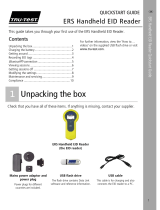 Tru-Test ERS Handheld EID Reader Guide de démarrage rapide
Tru-Test ERS Handheld EID Reader Guide de démarrage rapide
-
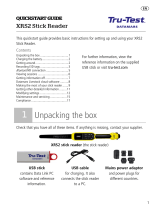 Tru-Test XRS2 Stick Reader Guide de démarrage rapide
Tru-Test XRS2 Stick Reader Guide de démarrage rapide
-
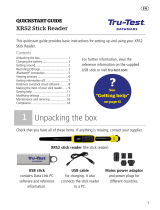 Tru-Test XRS2 Stick Reader Guide de démarrage rapide
Tru-Test XRS2 Stick Reader Guide de démarrage rapide
-
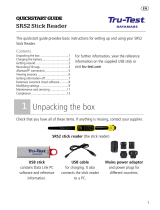 Tru-Test SRS2 Stick Reader Guide de démarrage rapide
Tru-Test SRS2 Stick Reader Guide de démarrage rapide
-
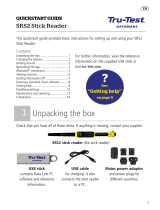 Tru-Test SRS2 Guide de démarrage rapide
Tru-Test SRS2 Guide de démarrage rapide
-
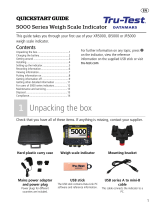 Tru-Test JR5000 ID5000 XR5000 Guide de démarrage rapide
Tru-Test JR5000 ID5000 XR5000 Guide de démarrage rapide
-
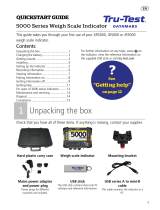 Tru-Test JR5000 ID5000 XR5000 Guide de démarrage rapide
Tru-Test JR5000 ID5000 XR5000 Guide de démarrage rapide
-
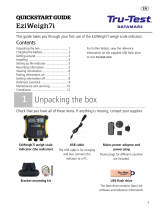 Tru-Test EziWeigh7i Guide de démarrage rapide
Tru-Test EziWeigh7i Guide de démarrage rapide
-
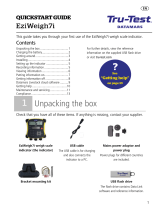 Tru-Test EziWeigh7i Guide de démarrage rapide
Tru-Test EziWeigh7i Guide de démarrage rapide


























